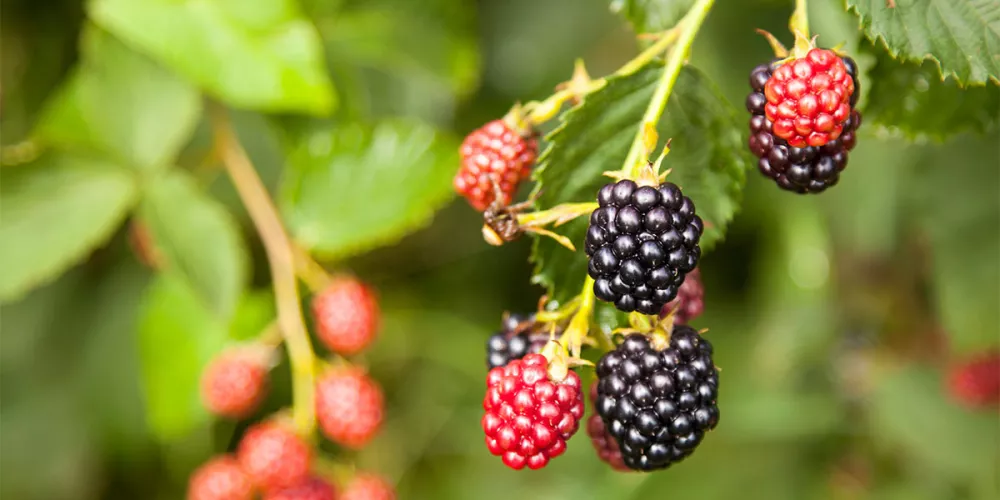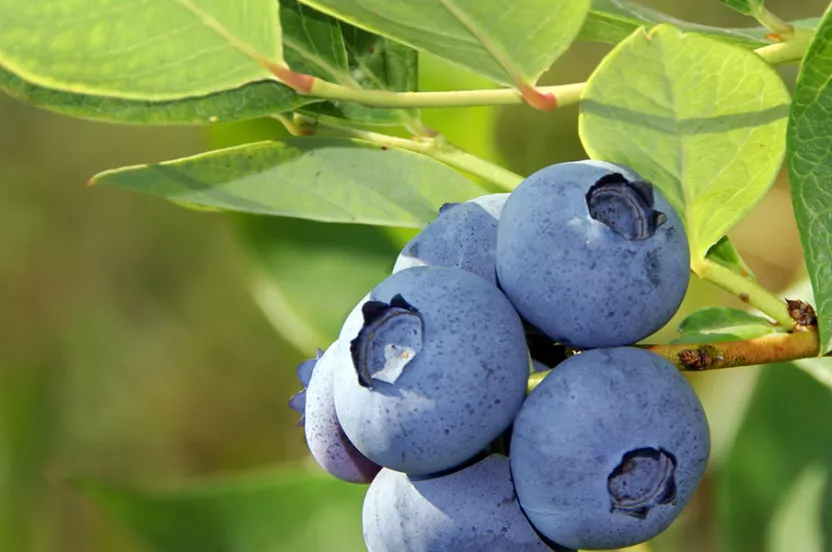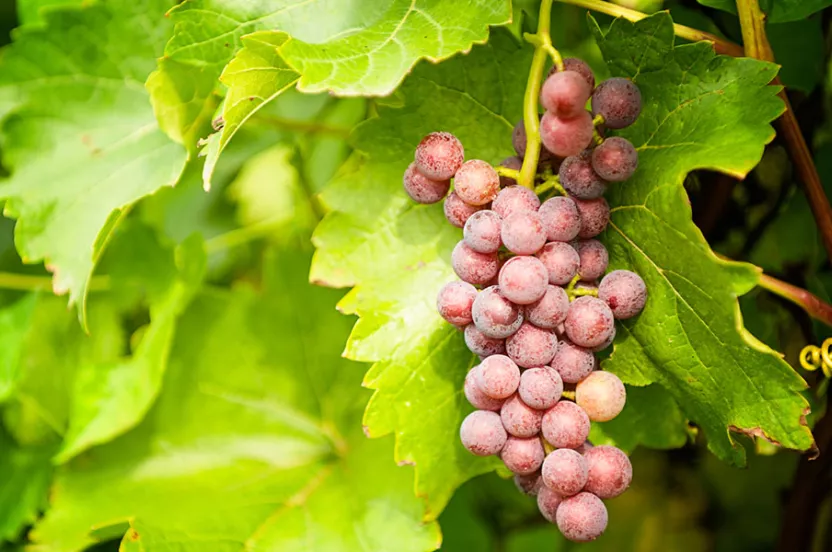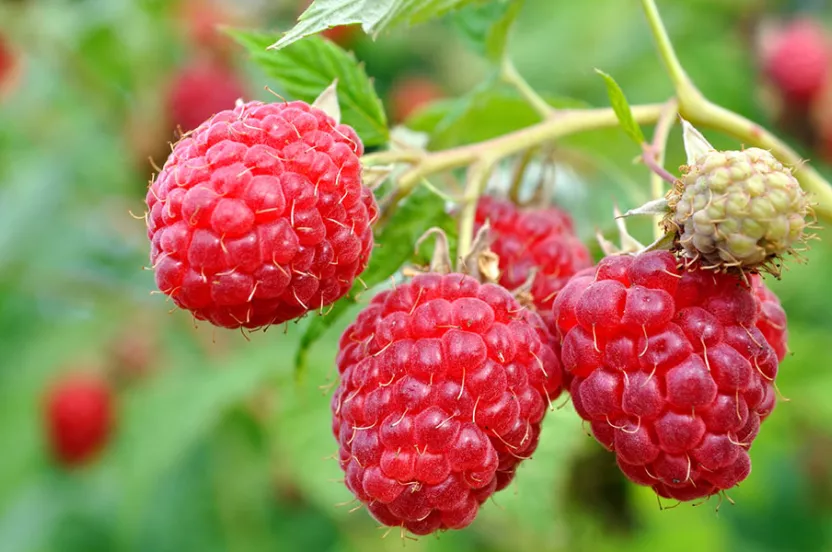The Arbor Day Foundation is pledging 10 million trees to areas impacted by hurricanes Helene, Milton Help us replant
Planting
Blackberry Planting & Care Instructions
Blackberries are often considered one of the easiest fruits to grow at home. They are a native species to the United States and grow as a small shrub or trailing vine. The fruit from this plant can be used for table fruit, syrup, jams and jelly.

Blackberries are produced on the canes of a perennial shrub. 'Arapaho' is a thornless, self-supporting blackberry and the following instructions are for this upright kind of blackberry.
The roots live for more than two years and the canes take two years to finish their lifecycle. During the first year, the canes sprout and grow to their full height. Canes are produced from both the roots and the crown. They go dormant for the winter. In the second year the canes leaf, flower, and fruit. At the same time the roots are producing new first-year canes. After fruiting, the second-year canes die and must be be removed.
How to Plant, Care, Prune, and Harvest
Site Selection
Site Selection for Blackberry Bushes
- Light: Full Sun
- Soil: Prefer acidic to slightly basic (6.0-7.0), well-drained, organic soil. However, they adapt to most soil types except alkaline and wet. If you have clay soil, you will need to amend with organic matter. To increase the soil's organic content, amend with organic mulch-wet peat moss, well-aged sawdust, straw or leaf litter.
- Pollination: Blackberries are self pollinating.
- Hardiness Zone: 4-9
- Minimum Chill Hours Needed: 400-500
- Where to Plant: Blackberries tend to form thickets and are vigorously rooted. Locate the plants where you can control "volunteers. " Blackberries have long roots and send up suckers many feet from the parent plant. Leave room to mow around the beds.
- Do Not Plant: In established garden areas where you have previously planted vegetables or fruit plants. Plant blackberries 300 feet away from raspberries.
- Trellis Support Not Needed: 'Arapaho' blackberries do not need a trellis for support. However, they can be trained to a trellis no higher than 6'-8'.
How to Plant Blackberry Bushes
For best results, plant your blackberry bushes in early spring. Once your plants arrive, plant them immediately. If you cannot plant immediately, keep new arrivals cool and roots moist. To keep cool, it is recommended that you store in refrigerator or cool place.
- Unpack and Soak: Unpack blackberry and soak in water for 3 to 6 hours just before planting.
- Cut Broken Roots.
- Cover Roots: Cover roots from sunlight when planting. Blackberries have a high mortality rate when roots are exposed to sunlight while planting.
- Dig Hole(s): The width of the hole should allow you to spread roots. If you are planting multiple blackberries dig holes 2'-4' apart. If you are creating several rows, dig holes 6'12' apart.
- Spread Roots in Hole.
- Shovel Dirt Back in Hole and Add Amend Soil.
- Water: Give each plant 1"-2" of water. The plants are rather shallow rooted, so moisture needs to be at the surface. Do not let soil become dry to a depth of 6".
- Add Fertilizer: A weak liquid nitrogen fertilizer may be applied at planting. Keep fertilizer 3"-4" away from the base of the plant to avoid burning the roots.
- Mulch: Mulch the first year to keep the weeds down and increase the crop yield, but do not mulch after that unless the soil is very sandy.
How to Water Blackberries
- First three weeks watering schedule: Water blackberries plants during the day. Water more frequently for 2-3 weeks after planting. As a rule of thumb, the top inch of soil is moist during the first 2-3 weeks.
- Watering after first three weeks: Water blackberries plants during the day. Then, give them about 1"-2" per week during growing season and up to 4" per week during harvest. The plants are rather shallow rooted, so moisture needs to be at the surface. Do not let soil become dry to a depth of 6".
How to Prune Blackberries
- First Year Pruning: First year erect canes should be left unpruned.
- Annual Pruning after First Year: Hand-held clippers are necessary when pruning. First year erect canes should be left unpruned. Second year canes should be pruned back to 40"-48". Pruning encourages lateral branching and increases cane strength, so they don't fall over in snow and wind. Pruning should be done early in the growing season to decrease wounds that cause cane blight. Lateral branches should be cut back to 12"-18".
- During the second year, remove damaged, weak and rubbing canes. You should thin out healthy canes closer than 6" apart. Any pruned or removed canes should be disposed to eliminate the spread of disease and insects.
How to Fertilize Blackberry Bushes
- 1st Year Fertilizing: After the soil has settled, add 10-10-10 nitrogen fertilizer. You can purchase 10-10-10 nitrogen fertilizer at your local garden store.
- Fertilizing after 1st year: Add actual nitrogen or a 10-10-10 nitrogen fertilizer, a higher amount added in the second year. When spreading the fertilizer, keep it several feet away from the base of the plant to avoid burning the roots.
How to Pick Blackberries
It takes about three years to achieve a full crop of berries. After the berries turn shiny black, wait a few days to let them soften and lose their shine. Now they will be at the peak of sweetness for picking, When ripe, the berry will detach easily. Harvesting in the morning on cool, dry days will result in a longer shelf-life. Put in shallow containers to avoid crushing and move out of the sun. In very warm areas, blackberries may turn red and become bitter if exposed to excessive sunlight. Avoid extra handling of the berries and refrigerate. Do not wash the berries until ready to use them. Blackberries have a longer shelf life than raspberries; about 4-5 days. Blackberries will stain clothing, so wear old or dark clothing when picking.



